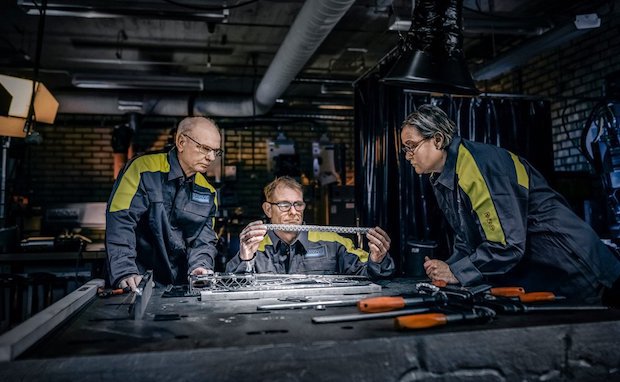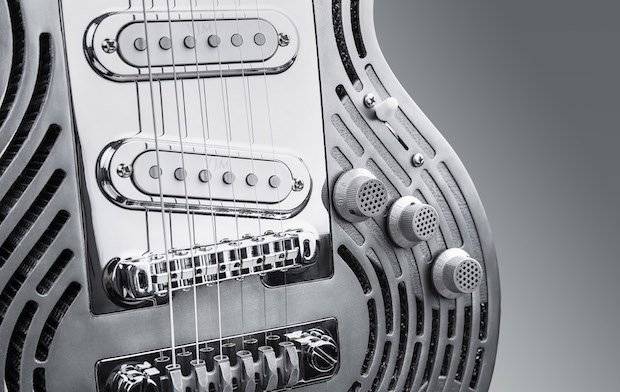Swedish engineering company, Sandvik, has built a guitar so strong that no matter how much I fancy myself a wannabe Joan Jett, is virtually impossible to break.
The guitar, believed to be a world-first, is a collaborative project from a number of divisions within Sandvik and guitar designer, Andy Holt of Drewman Guitars. The body was 3D printed in titanium using a powder bed process, while the neck and fretboard were machined by Sandvik Coromant from a solid block of recycled stainless steel.
“We’ve had to innovate from the top down. There’s not a single part of this guitar that has been made before. It’s a piece of art, really,” says Holt.
The guitar was put to the test by Swedish neo-classical heavy metal guitarist, Yngwie Malmsteen, renowned for smashing a fair few guitars in his 30-year career, who commented: “I gave everything I had, but it was impossible to smash.”
The weakest part of any guitar is where the neck joins the body and you don’t exactly have to go at it like Malmsteen to do some damage. In the least rock n roll circumstances, I once shared a rehearsal room with a band who decided a game of ‘tick’ was a good idea around a rack of unwitting instruments and well, you can guess how that turned out. Sandvik overcame this by first simulating potential impact forces and then milling the neck and main hub of the body as one piece, all the way down to 1mm thick in some areas.

Super-light lattice structure made from Sandvik hyper-duplex stainless steel.
To further strengthen the fret and neck, the team created a super-light lattice structure (or an Isotropic Lightweight Structure), the strongest structure for a given weight ever invented, using hyper-duplex steel, a material that is 30% stronger than Sandvik’s previous toughest stainless steel. The pieces, each made of different alloys, then had to be welded together with expert precision to maintain the guitar’s integrity and avoid any torsion. The result is said to be so strong you can apparently use this guitar as a hammer and it still won’t break. The same can’t be said for the stage floor or amps.
“Precision was critical,” said Henrik Loikkanen, machining process developer at Sandvik Coromant. “Our software is built on years of experience, giving tool and the cutting data recommendations that helped us mill the fretboard down to a challenging thickness of one millimetre in places.”
Though there are a number of 3D printed guitar examples out there already, Sandvik says it chose to engineer this smash-proof concept to demonstrate how advanced, precise and sustainable its techniques are.
“Additive manufacturing allows us to build highly complex designs in small production runs,” said Amelie Norrby, additive manufacturing engineer at Sandvik. “It lets us create lighter, stronger and more flexible components with internal structures that would be impossible to mill traditionally. And it is more sustainable because you only use the material you need for the component, minimising waste.”
Source: tctmagazine



